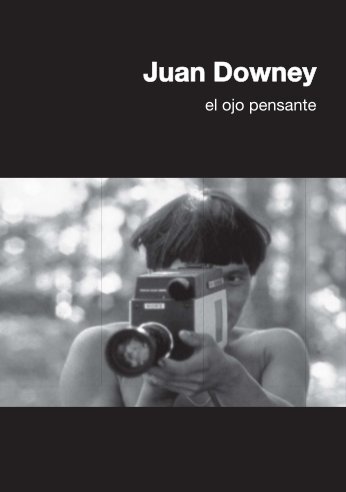Juan Downey: El ojo pensante / The Thinking Eye (2010) [Spanish/English]
Filed under catalogue | Tags: · art, art history, cybernetics, electronic art, photography, video, video art

Catalogue of the exhibition of a US-based Chilean pioneer video artist. During his career Downey created an extensive body of work that also includes electronic and video sculptures, photography, painting, drawing, printmaking, performance, installation and writing.
Curated by Julieta Gonzalez
Co-curated and Edited by Marilys Belt de Downey
Texts by Carla Macchiavello, Valerie Smith, Julieta Gonzalez, Nicolas Guagnini
227 pages
PDF (English section pp 173-217; 4 MB, updated on 2014-9-14)
Comment (0)Georges Didi-Huberman: Invention of Hysteria: Charcot and the Photographic Iconography of the Salpetriere (1982/2003)
Filed under book | Tags: · cultural studies, france, hypnosis, hysteria, jouissance, photography, psychology

In this classic of French cultural studies, Georges Didi-Huberman traces the intimate and reciprocal relationship between the disciplines of psychiatry and photography in the late nineteenth century. Focusing on the immense photographic output of the Salpetriere hospital, the notorious Parisian asylum for insane and incurable women, Didi-Huberman shows the crucial role played by photography in the invention of the category of hysteria. Under the direction of the medical teacher and clinician Jean-Martin Charcot, the inmates of Salpetriere identified as hysterics were methodically photographed, providing skeptical colleagues with visual proof of hysteria’s specific form. These images, many of which appear in this book, provided the materials for the multivolume album Iconographie photographique de la Salpetriere.
As Didi-Huberman shows, these photographs were far from simply objective documentation. The subjects were required to portray their hysterical “type”—they performed their own hysteria. Bribed by the special status they enjoyed in the purgatory of experimentation and threatened with transfer back to the inferno of the incurables, the women patiently posed for the photographs and submitted to presentations of hysterical attacks before the crowds that gathered for Charcot’s “Tuesday Lectures.”
Charcot did not stop at voyeuristic observation. Through techniques such as hypnosis, electroshock therapy, and genital manipulation, he instigated the hysterical symptoms in his patients, eventually giving rise to hatred and resistance on their part. Didi-Huberman follows this path from complicity to antipathy in one of Charcot’s favorite “cases,” that of Augustine, whose image crops up again and again in the Iconographie. Augustine’s virtuosic performance of hysteria ultimately became one of self-sacrifice, seen in pictures of ecstasy, crucifixion, and silent cries.
Originally published by Editions Macula, Paris, 1982
Translated by Alisa Hartz
Publisher MIT Press, 2003
ISBN 0262042150, 9780262042154
373 pages
PDF (updated on 2012-9-24)
Comments (2)Jacques Khalip, Robert Mitchell (eds.): Releasing the Image: From Literature to New Media (2011)
Filed under book | Tags: · acoustics, aesthetics, art, audiovisual, biopolitics, cinema, critique, image, literature, new media, new media art, phenomenology, philosophy, photography, sound recording, theory, video

“It has become a commonplace that “images” were central to the twentieth century and that their role will be even more powerful in the twenty-first. But what is an image and what can an image be? Releasing the Image understands images as something beyond mere representations of things. Releasing images from that function, it shows them to be self-referential and self-generative, and in this way capable of producing forms of engagement beyond spectatorship and subjectivity. This understanding of images owes much to phenomenology—the work of Husserl, Heidegger, and Merleau-Ponty—and to Gilles Deleuze’s post-phenomenological work. The essays included here cover historical periods from the Romantic era to the present and address a range of topics, from Cézanne’s painting, to images in poetry, to contemporary audiovisual art. They reveal the aesthetic, ethical, and political stakes of the project of releasing images and provoke new ways of engaging with embodiment, agency, history, and technology.”
With contributions by Peter Geimer, Jean-Luc Marion, Giorgio Agamben, Mark B.N. Hansen, Vivian Sobchack, Timothy Murray, Cesare Casarino, Kenneth Surin, Forest Pyle, Kevin McLaughlin, Bernard Stiegler
Publisher Stanford University Press, 2011
ISBN 0804761388, 9780804761383
304 pages
PDF (updated on 2019-10-7)
Comments (2)
